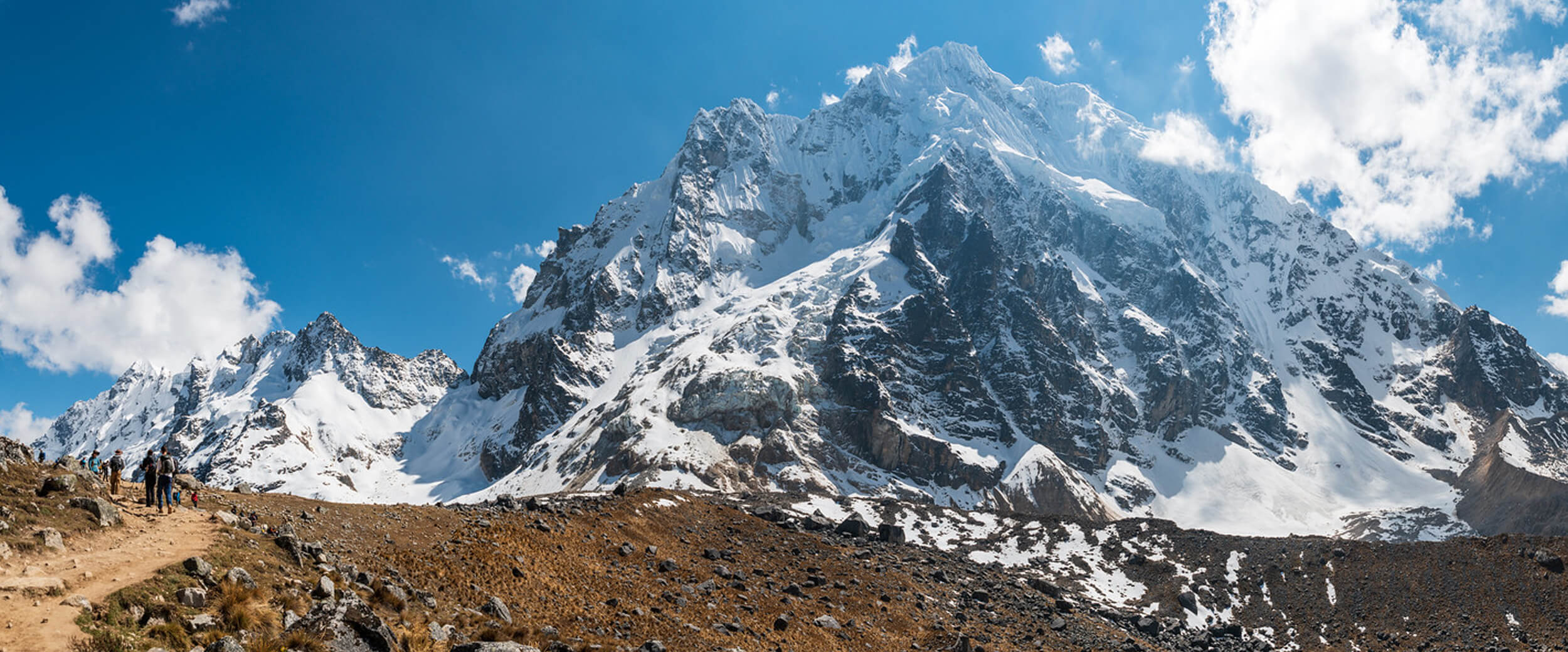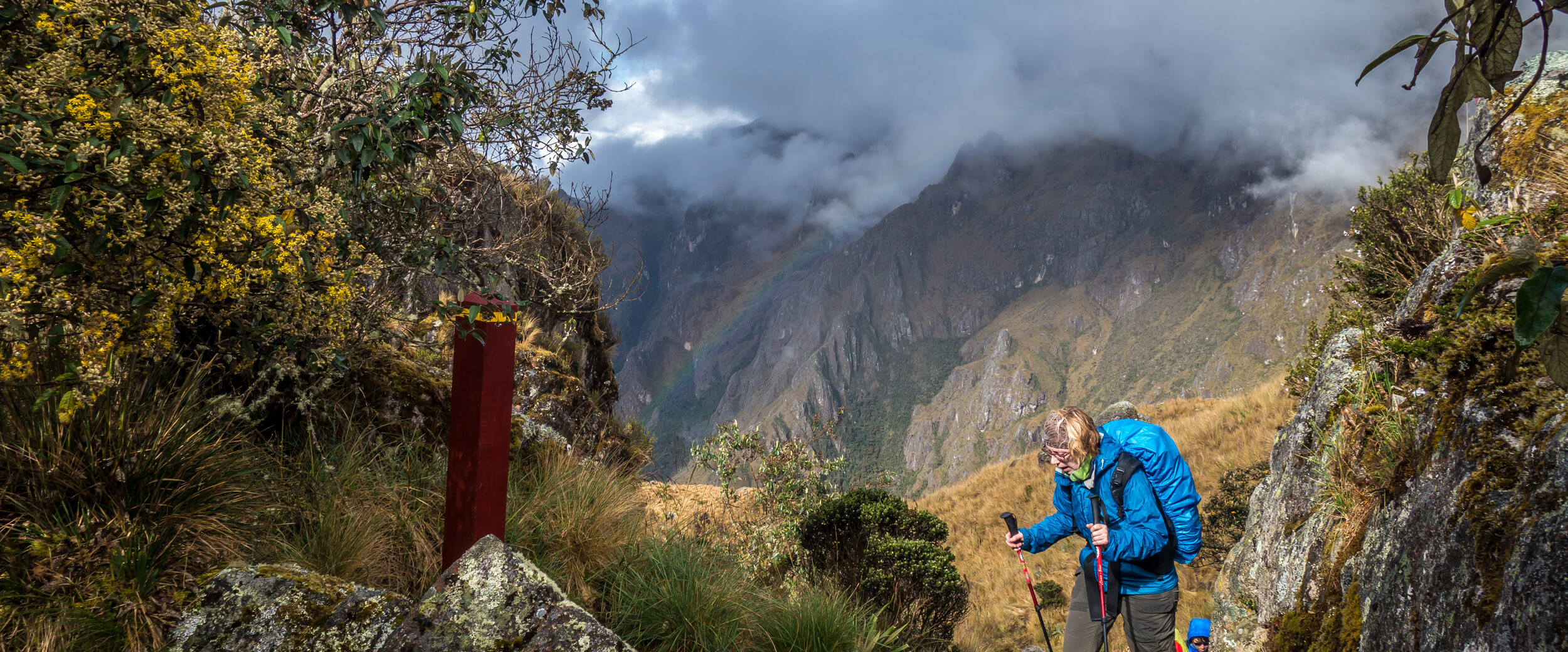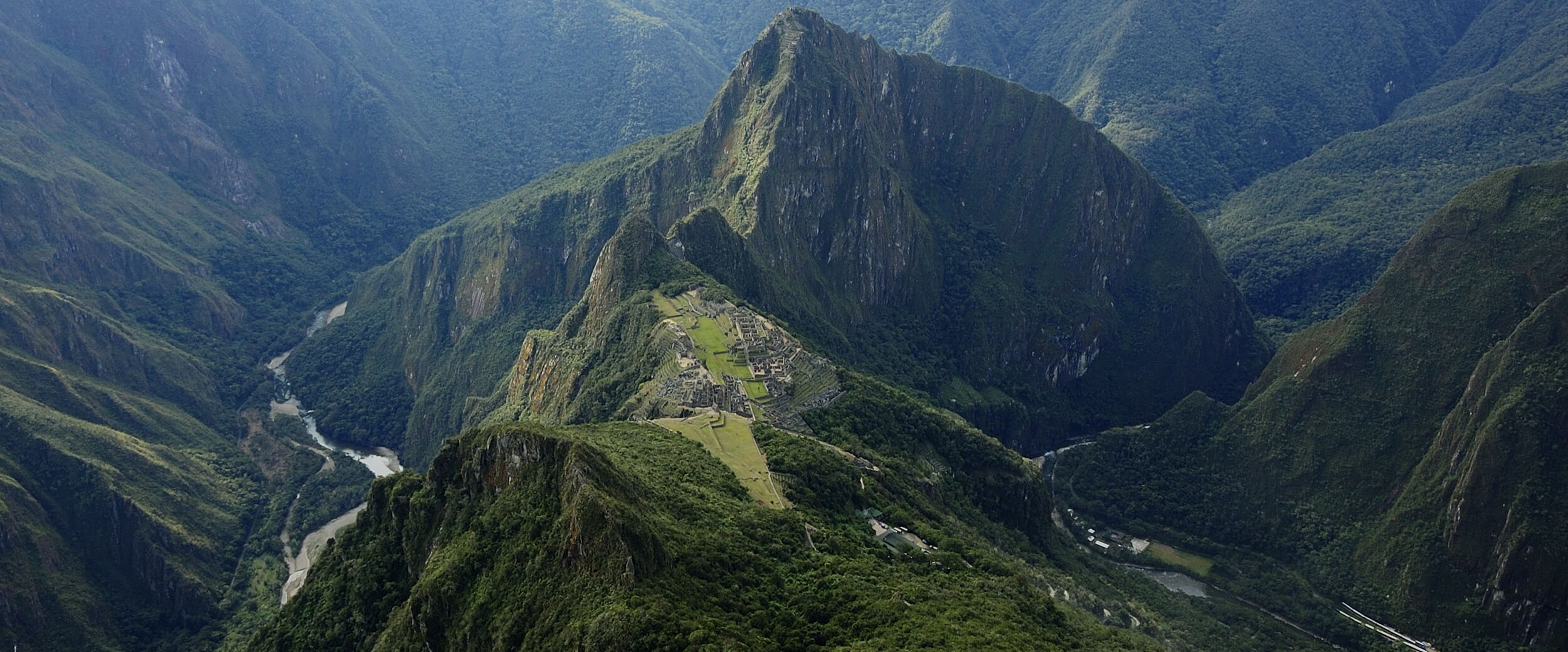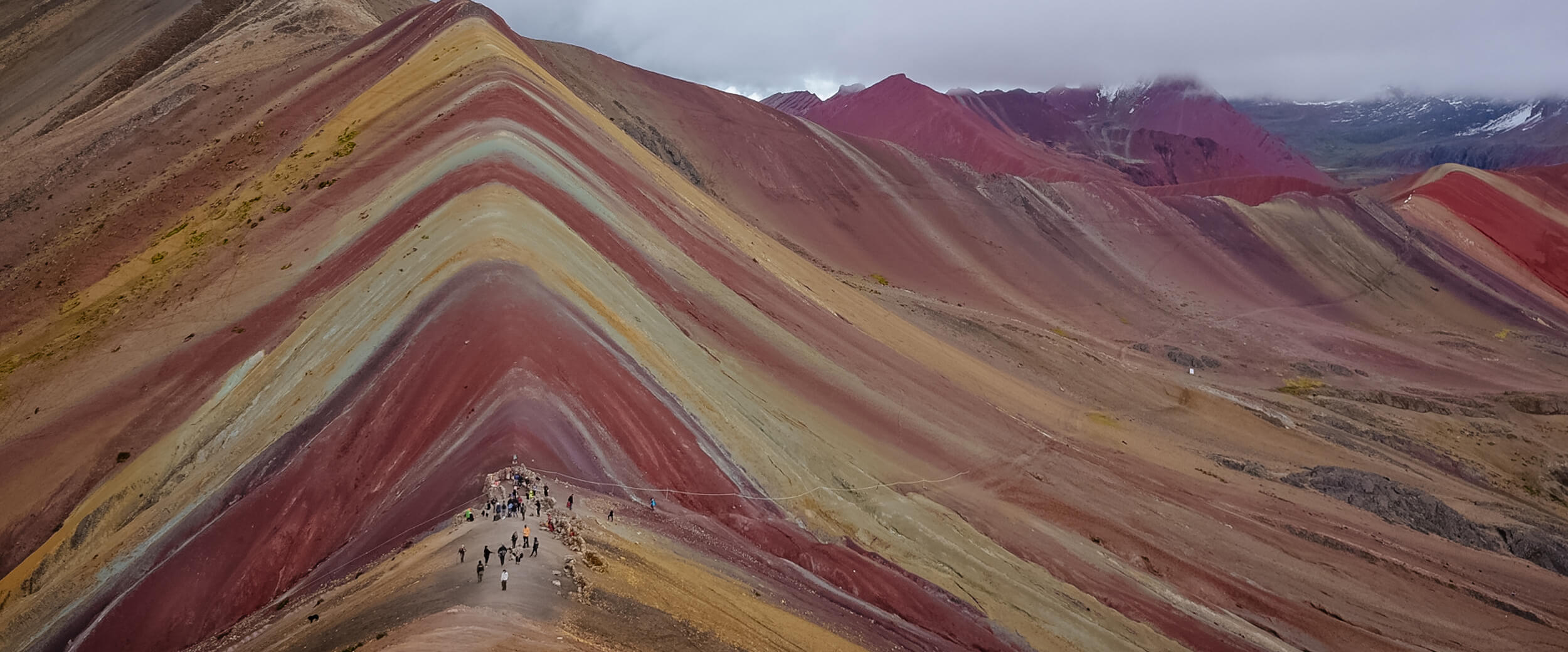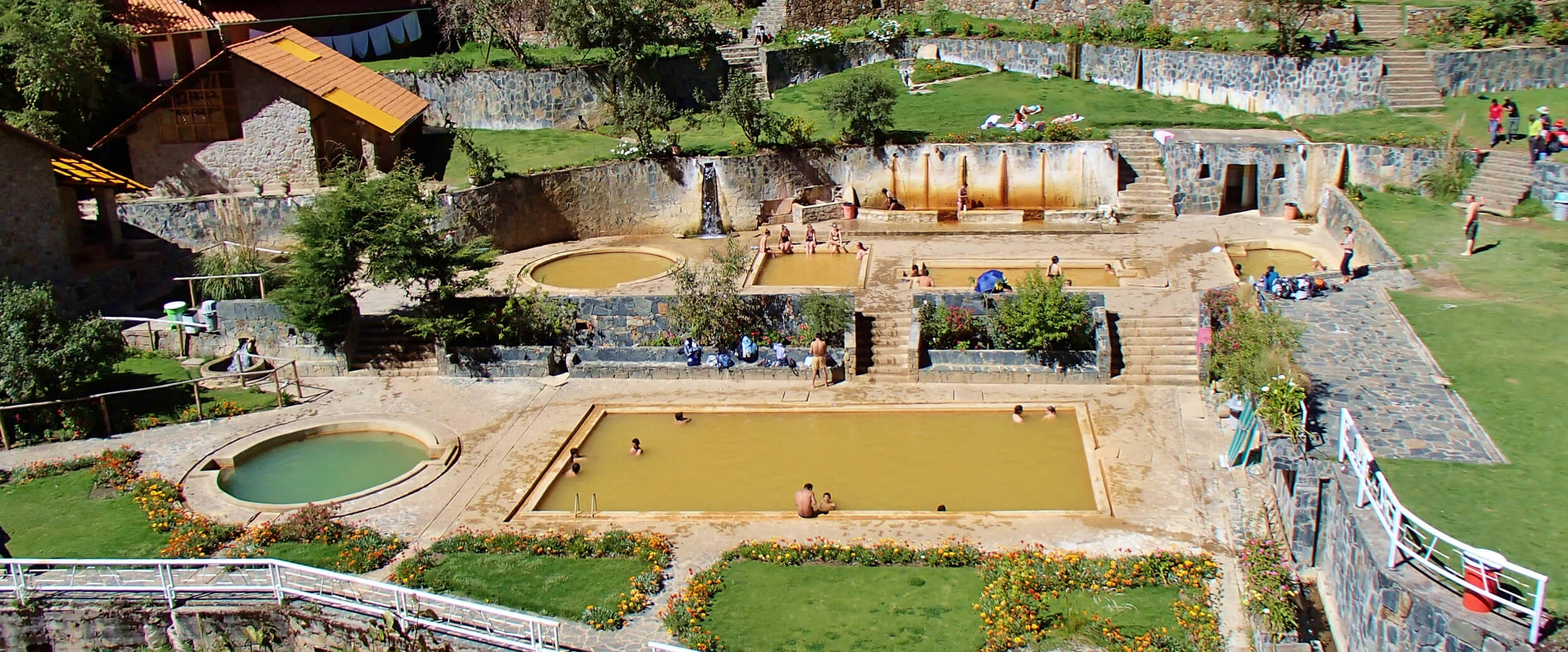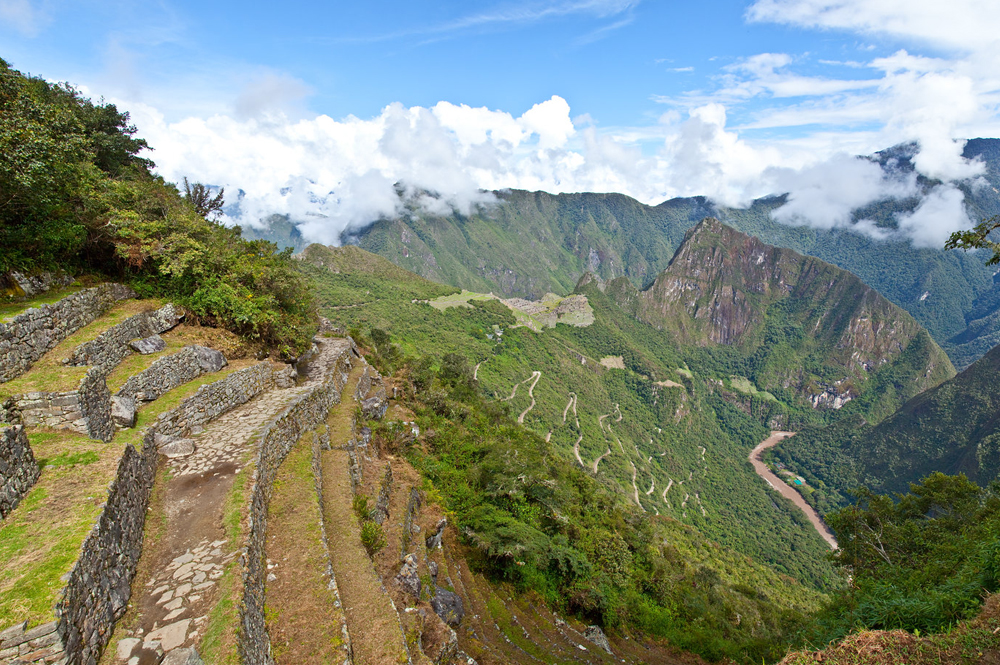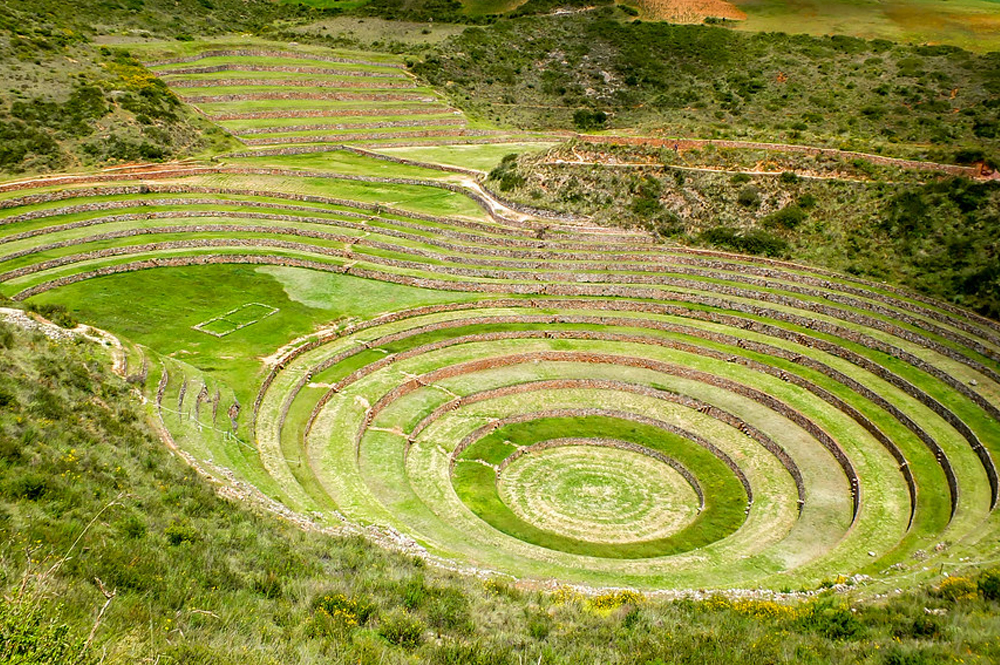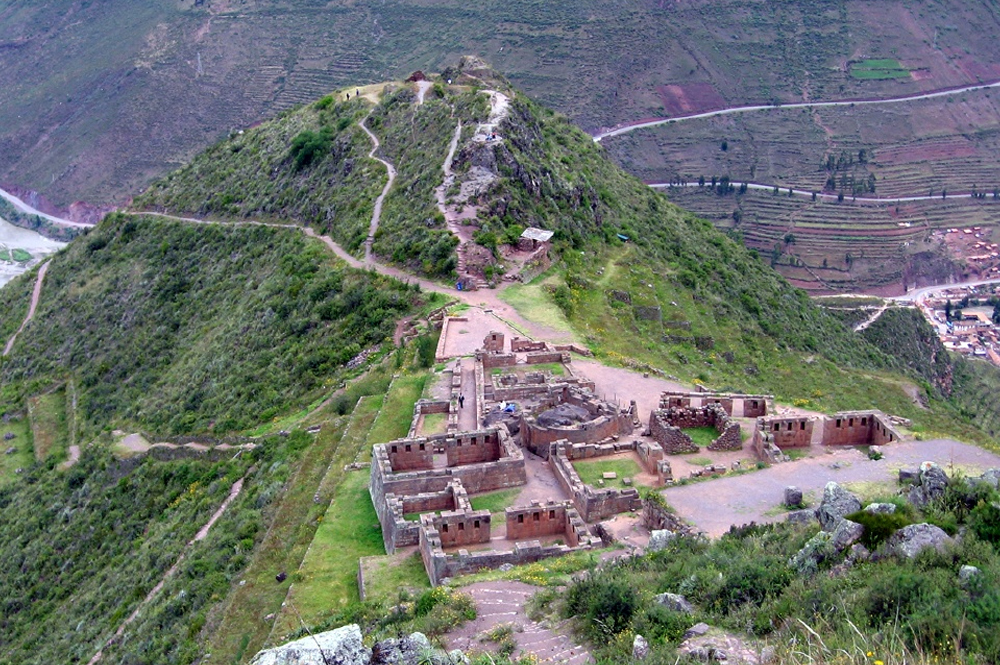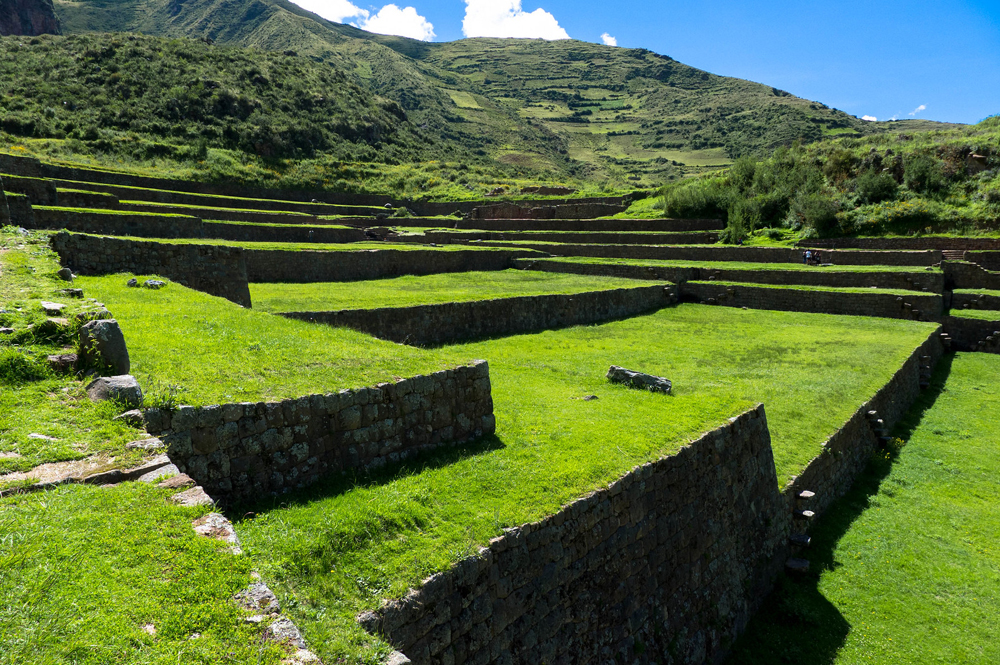In the Cusco region in addition to the usual trail, there are other destinations. Hikes in Red Valley may be perfect for you. The trails there are tranquil. You’ll enjoy amazing landscapes. For those seeking solitude this may be the place.
Enjoy the natural beauty of this place. Here, the hikes in Red Valley are serene. Moreover you’ll find some peace in colorful nature.
The Red Valley’s trails weave through red hills and greenery. You will get a picturesque view for photos. Hence is ideal for photographers and nature lovers alike. It’s a quiet haven.
Plan your visit early in the morning. The late afternoon is also an option. These times offer softer light and cooler temperatures. This time is ideal for your hike. For now the Red Valley is a peaceful escapade.
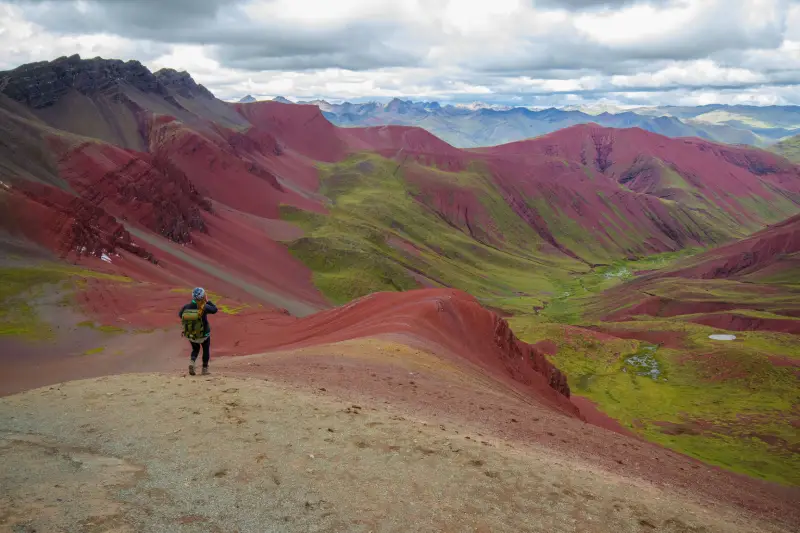
Discovering Red Valley: A Hidden Jewel Near Cusco
Red Valley remains a little unknown. May is one of Cusco‘s best-kept secrets. There are few tour operators that offer this route alongside Rainbow Mountain. The valley hike is usually 30 minutes.
Only a short journey away from the tourist paths. This spot lies 20 minutes from Rainbow Mountain, Vinicunca. Its proximity makes it an ideal escape. Once in the valley the crowds wont be a problem.
The landscape of Red Valley is usually ignored. However it is dramatic and unique. It contrasts with other areas around Cusco. Here, the earth appears in shades of red. Everything is the result of natural forces.
The area’s unique rock formations add to the appeal. But the main eyecandy is the colors. The panorama captivates all who visit. Hikes in Red Valley can be quite impressive.
Exploring the Trails: Ideal Hikes in Red Valley
Embarking on hikes in Red Valley can be the best experience. Hiking these trails can be quite relaxing. Most of the paths are accessible for all skill levels. Adventurers and serene walkers alike will enjoy it. For that reason it is highly recommended. At least in its current state.
Hikes in Red Valley are not that popular for now. But with time and demand this may change. Furthermore, the location near Rainbow mountain could make it more popular. This may disrupt the peace in the valley. But in the meantime, you’ll get a quiet experience.
Elevation here reaches impressive heights. Of course it is not as high as Rainbow Mountain. Hikes in Red Valley are more relaxing. However, the rock formation may offer a chance for rock climbing.
This would make the hikes in Red Valley more thrilling. The valley’s altitude, with its diverse ecosystem, creates a hiking experience unlike any other. Even among the other trails in the region, this valley is unique. Nature won’t disappoint either. You’ll find the local flora and fauna intriguing.
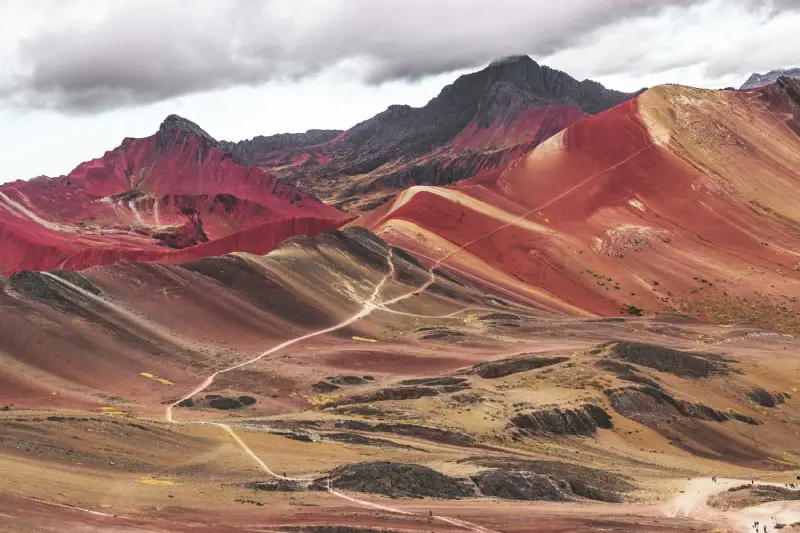
Secluded Splendor: The Unique Ecosystem of Red Valley
Red Valley is not only a place of visual wonder. This site is also an ecological treasure. Located strategically, it supports a distinct type of ecosystem. All of them thrive at high altitudes. This area’s flora and fauna have adapted. The environmental conditions can be harsh on life.
You’ll also encounter small native communities. The hiking trail passes through nearby villages and farms. So it has a cultural side to it.
Rainbow Mountain’s Rise: Navigating the Tourist Tide
Rainbow Mountain has quickly become a popular destination. Many visitors in Cusco look for this experience. Many only travel to be able to hike it.
The mountain is famous for its colorful, striped hills. Its popularity, however, brings significant crowds. Especially during peak tourist seasons. Every year, thousands flock to witness it.
The trail to Rainbow Mountain is as challenging as it is beautiful. Positioned at high altitude, the hike demands good physical condition. Therefore you’ll also need proper acclimatization.
Visitors will traverse rocky paths. The trail is steep and there are loose rocks. Although the path is short. This effort is worthy of the panoramic views and unique scenario.
Managing the Crowds: Tips for a Better Experience
To handle the influx, it’s advisable to start the hike early in the morning. This strategy helps avoid the largest groups that arrive later in the day. The early hours offer a quieter trail and softer light for photography.
Navigating through the crowds requires patience and planning. Using Google Maps can help identify less crowded times and alternative routes. Always wear sturdy hiking boots for the uneven terrain. The entrance fee helps maintain the trail and manage the area’s ecosystem.
Despite the crowds, the experience of hiking Rainbow Mountain remains unforgettable. The landscape offers a spectacle of color and natural wonder that attracts adventurers from all over the world. It’s a highlight for many travelers in the region.
Trailblazing in Red Valley: What Hikers Need to Know
Embarking on hikes in Red Valley offers a breathtaking experience just a stone’s throw from Cusco. This area is easily accessible, with the trailhead only 20 minutes away from the more crowded Rainbow Mountain. Here, hikers can immerse themselves in a landscape filled with stunning red hues and serene trails.
The Red Valley trail is renowned for its unique terrain. The hiking path is well-marked and manageable for various skill levels. It’s essential to wear sturdy hiking boots to navigate the rocky and sometimes uneven ground. Along the way, panoramic views and vibrant rock formations provide endless photographic opportunities.
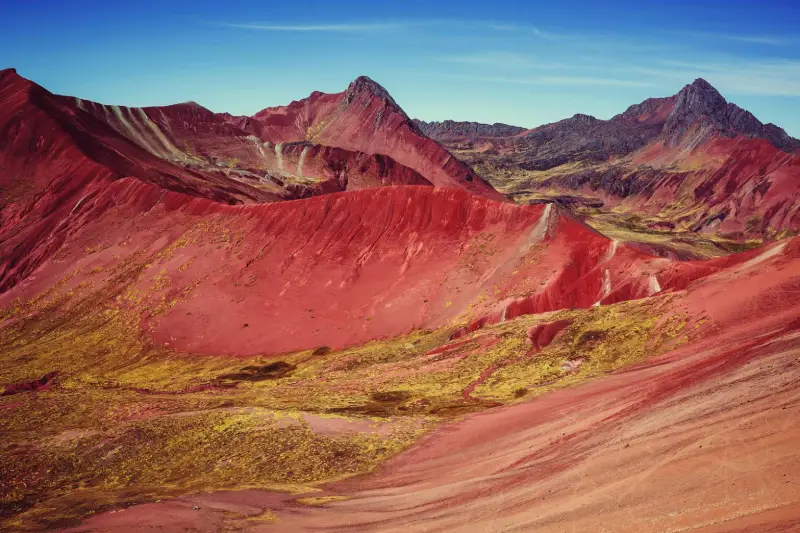
Getting There and Enjoying the Trail
Reaching Red Valley is straightforward. Travelers can use Google Maps to find the quickest route to the valley trailhead. Public transportation options are available, but a private vehicle is highly recommended for flexibility. An entrance fee is typically required, contributing to the conservation of this pristine area.
Once on the trail, hikers can expect an unforgettable journey through one of Cusco’s hidden gems. The path meanders through the valley, offering up-close encounters with the area’s distinct flora and fauna. The serene atmosphere is perfect for those looking to escape the usual tourist paths.
Secret Paths: How Red Valley Offers a Quieter Alternative
For those seeking something secluded, hikes in Red Valley are available. This hidden gem is next to Rainbow Mountain. It offers quieter trails and stunning scenery. Here, you can enjoy the beauty of nature without the crowds.
Red Valley in the current days is not full of people. But at the same time, it is not far from the usual routes. It is a quiet location that is not completely remote. This makes the valley safer. Hence it’s perfect for solo exploration.
The Red Valley trail is less frequented but equally mesmerizing. Its paths wind through striking red landscapes, adorned with unique rock formations. Early morning hikes are highly recommended, as you can catch the breathtaking Red Valley sunset that paints the sky in vibrant colors.
Enhancing Your Hiking Experience
To ensure a safe and enjoyable hike, proper preparation is key. Wear sturdy hiking boots to handle the valley’s varied terrain. The trail can be rocky, so good footwear provides essential support and grip. Also, check Google Maps for the best route to the valley trailhead. This helps in planning your journey more efficiently.
Carrying sufficient water and snacks is crucial, as there are no facilities once you embark on the trail. Staying hydrated and energized is important, especially at high altitudes. Always respect the environment by sticking to the marked paths and carrying out all your trash.
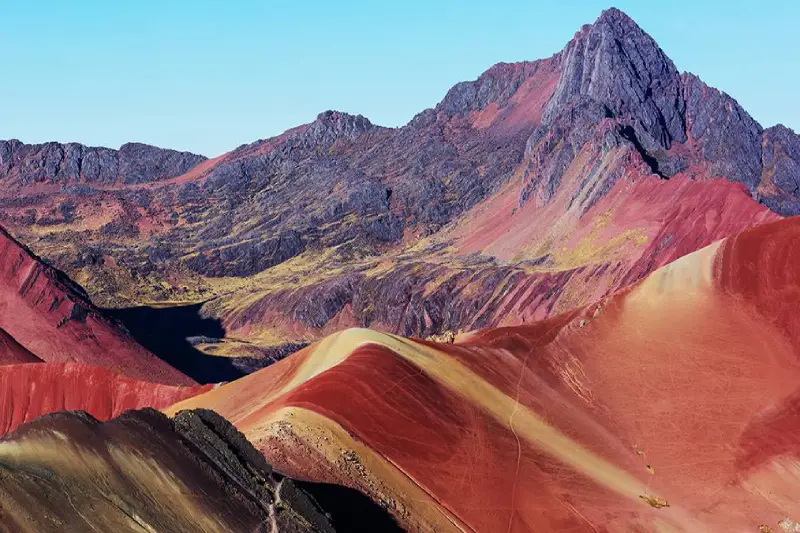
Welcome to the amazing Cusco’s South Valley. Here, ancient history and living traditions are present. Discover the valley’s cultural treasures as you explore.
This region will surprise you with scenic landscapes. Every corner is a chance to explore and find culture or history. It’s a day journey like no other.
Join us as we uncover the art, architecture, and historic areas. From colonial churches to Inca ruins, there’s much to admire. Let the South Valley be your next destination.
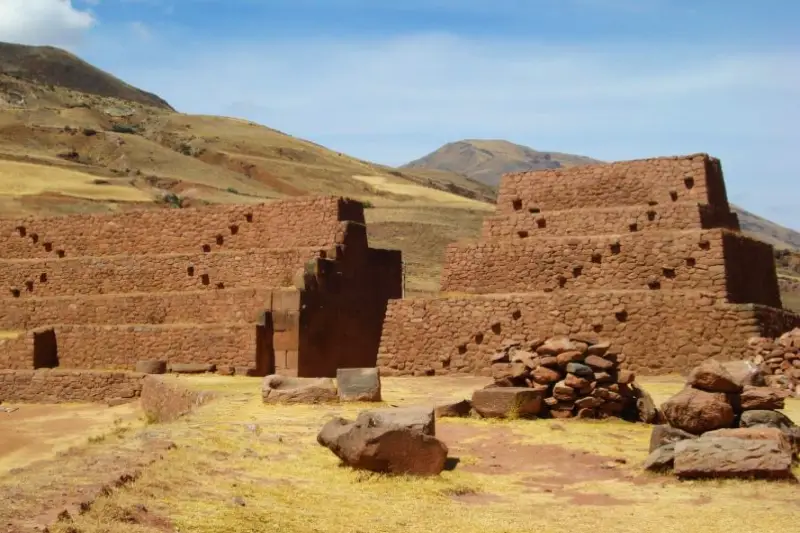
Tipón: Engineering Marvel of the Inca
Tipón is an inca city complex within Cusco’s South Valley. This archaeological site showcases advanced Inca hydraulic engineering. Elaborate terraces and crafted stone channels dominate the landscape.
Water still flows through the site’s aqueducts. A simple system still pumps water over the complex. The terraces ensured efficient agriculture at high altitudes. Overall you can get the idea that this was an agricultural place.
However Tipón was likely a royal estate. Altogether the site boasts an important presence.
Exploring the Terraces of Tipón
The terraces at Tipón provide a stunning view of the valley in Cusco. Each level is a step back in time. To illustrate the Inca’s mastery over their environment. This site is not just an ancient farm but a symbol of harmony with nature.
Visitors to Cusco’s South Valley often include Tipón in their itineraries. It’s a perfect day trip for those fascinated by ancient cultures. The site offers a peaceful escape from the bustling city of Cusco.
A Must-See on Your Trip to the South Valley
Exploring Tipón allows you to appreciate the strategic importance of water in Inca society. The site is less crowded than Machu Picchu, offering a more intimate experience. It is an essential stop for anyone visiting the archaeological sites of Cusco’s South Valley.
Tipón remains a vibrant part of Cusco’s South Valley’s heritage. Its well-preserved state invites exploration and admiration. A visit here connects you deeply with the past achievements of the Inca.
Pikillacta: Glimpse into the Ancient Wari Civilization
Pikillacta stands as a remarkable pre-Inca city in Cusco’s South Valley. This extensive archaeological site has its origins in the Wari culture. Its well-planned design highlights the sophistication of its creators.
The site features towering walls and expansive plazas. Hundreds of buildings and rooms outline its once bustling activity. Pikillacta offers a unique insight into a civilization that thrived before the Incas.
Understanding the Wari Legacy
The ruins of Pikillacta depict the Wari’s architectural skills. Each structure at the site is in place with meticulous precision. In fact, advanced knowledge in South America existed before the Incas.
By the time the Inca empire started its ruling, Waris were a civilization. This led to conflict and there was a war between the Inca empire and the Wari. Wari culture led to a cultural legacy that was part of Inca history.

A Day Trip Back in Time
Exploring Pikillacta is visiting an ancient era. Visitors can wander through the remnants. The site is where you can start understanding the past.
Pikillacta is a part of Cusco’s South Valley’s heritage. Its preservation allows us to discover more of Peru’s historical landscape. For those interested in the roots of Andean civilizations. Thus you should visit.
Andahuaylillas: The Sistine Chapel of the Americas
Andahuaylillas Church is a masterpiece in Cusco’s South Valley. Due to the great artwork, it is dubbed Sistine Chapel of the Americas. The church’s in an art show in the middle of the valley.
Inside, the vibrant murals cover nearly every inch of the ceiling and walls. They depict religious scenes with rich symbolism and artistic mastery. This small village church rivals many European counterparts in its artistic wealth.
Art and Devotion in a High Altitude Gem
The church is not just an art collection. It’s an active church. And so you should respect the site. Nearby you’ll find other sites. Of course the zone is full of living culture. Visitors often feel a sense of peace here.
A day trip to this location is a journey through art and history. It’s an essential experience for visitors. The church’s architecture and art offer insights into colonial religious life.
Explore the Iconic Church of San Pedro Apóstol
The Church of San Pedro Apóstol in Andahuaylillas is part of the Cusco tourist ticket. Therefore it is accessible to everyone. Each visit supports the preservation of this historical site. After all, visitors have a great appreciation for the site.
Andahuaylillas is an important destination in Cusco’s South Valley. This site proves that significant art can thrive everywhere. Among the Cusco’s South Valley you’ll find a lot of surprises.
Raqchi: The Majestic Temple of Wiracocha
Raqchi remains a symbol in Cusco’s South Valley. It is one of the most impressive Inca ruins. In auditions, the construction is remarkably different. This site showcases the brilliance of the Inca.
The temple once stood with towering walls and a vast roof. There were numerous columns to sustain everything. Today, the remains still impress with their grandeur and scale. Most importantly, the site is there for you to visit.
Unveiling History in the Sacred South Valley
The site also includes residential areas, storehouses, and a ceremonial center. The site is perfect to illustrate Inca planning. Visitors can explore these remnants. Nonetheless the views are also impressive.
Raqchi is more than a day trip destination from Cusco. The temple served as a place for adoration to Wiracocha, creator of all. Since a certain period, Inca adored Wiracocha as their main deity.
A Center of Worship
Situated at a high altitude, Raqchi offers panoramic views of the surrounding Sacred Valley. The strategic location underscores its historical importance. This archaeological site continues to be a focal point for cultural studies.
Raqchi’s significance in Cusco’s South Valley is fact. It remains a key destination on the Cusco tourist ticket. Every visit reveals more about the Inca beliefs. Raqchi stands as a testament to their enduring legacy.
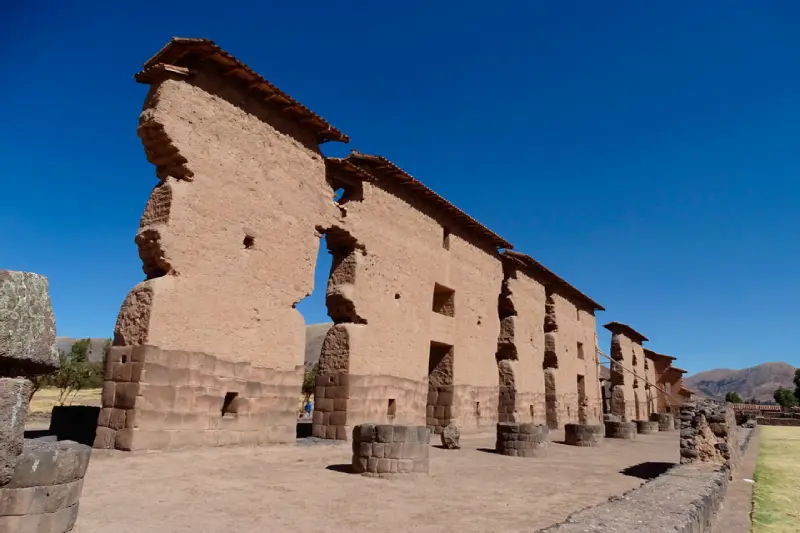
Ready for some of the most breathtaking landscapes in the world? The Inca Trail’s scenic spots offer unparalleled views, ancient ruins and nature. Prepare for some exclusive views, just some adventures to get to experience.
Remember that the Inca trail is a restricted path. Only so many entries are sold every year. This is a really important experience. And the Inca trail’s scenic spots are not avalible for many people.
Pack the right gear. Cameras and binoculars should help in this scenic journey. You’ll want to capture the expansive views. And don’t everlook other aspects of your journey.
Your adventure will take you through diverse terrains. The Trail to the Machu Picchu Ruins is challenging by itself. You’ll travel for 4 days by foot, that is an accomplishment. Let these natural wonders be the reward for all the effort.
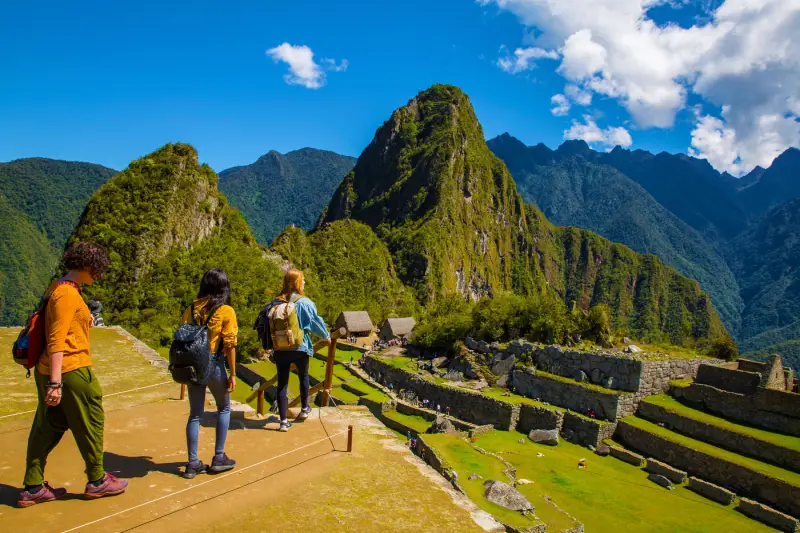
Majestic Machu Picchu: The Crown Jewel of the Inca Trail
Machu Picchu stands as the reward for those hiking the Inca Trail. This ancient Inca site is an emblem of perseverance and discovery. Set high in the Andes, Machu Picchu culminates the Inca Trail’s scenic spots.
Starting from the trailhead, you’ll arrive at Machu Picchu on the fourth day of the journey. The journey towards this archaeological wonder tests endurance. As the trail unfolds, hikers traverse diverse landscapes. Encounter from cloud forests to high mountain passes.
Arrival at Inti Punku: The Sun Gate
One of the icons of the Inca Trail hike is arriving at Inti Punku. Its name means Sun Gate. This point offers the first view of Machu Picchu. This first sighting of Machu Picchu from the Sun Gate is an unparalleled moment. Enjoy one of the most majestic Inca trail’s scenic spots.
Machu Picchu itself sits at an altitude of about 2,430 m / 7,972 ft above sea level. This elevation makes it one of the most breathtaking Inca trail ruins. The site boasts Inca engineering and design. The citadel integrates with the mountainous landscape.
The architecture of Machu Picchu respects its natural surroundings. It creates a harmonious balance between man-made and natural elements. The terraces, plazas, and temples offer a window into the Inca people’s ingenuity. Visitors can walk through the ruins and enjoy the scenery.
From every of the Inca trail’s scenic spots, this is the most famous and remarkable. People from all corners of the world come to see Machu Picchu. Sometimes they travel to Peru only to witness the majesty of Machu Picchu.
Dead Woman’s Pass: A High Altitude Adventure
Dead Woman’s Pass, known as the highest point on the Inca Trail. For the sheer altitude this is one of the Inca trail’s scenic spots. The pass offers a rigorous but rewarding trekking experience.
Located roughly halfway through the traditional Inca Trail trek. It is a crucial part of the journey to Machu Picchu. Hikers typically encounter this challenge on the second day of their adventure.
The Ascent to Dead Woman’s Pass
The trek to Dead Woman’s Pass involves a steep ascent. This is a hard ascend. Even seasoned hikers will sweat. Each step upward brings hikers closer to the sky, with increasing altitude and decreasing oxygen levels.
At 4,215 m / 13,829 ft above sea level, Dead Woman’s Pass is not just another site. In the Inca Trail hike, it is an achievement in itself. The altitude makes it both a physical and mental challenge. The air thins, the path steepens, and the surroundings grow more remote as one ascends.
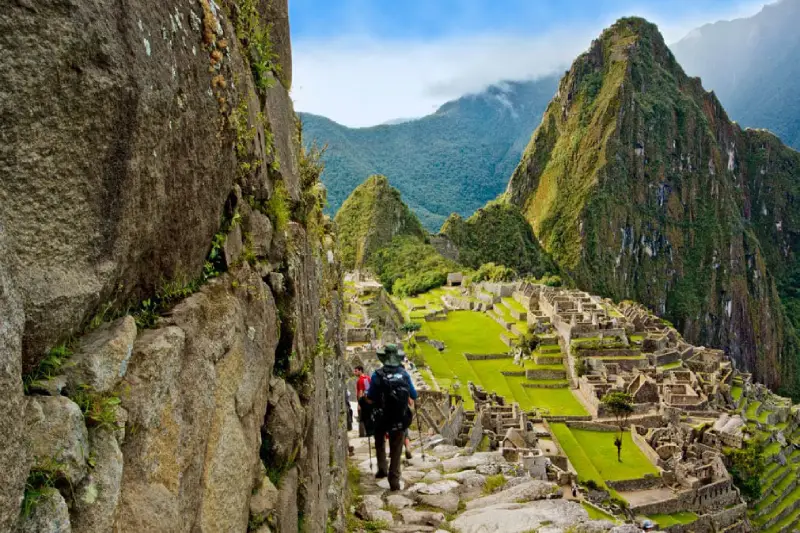
Views from the Top: A Reward Worth the Climb
The view from Dead Woman’s Pass is nothing short of spectacular. This is for a reason part of the Inca trail’s scenic spots. From the top, hikers obtain panoramic views of the cloud forest below and mountain above.
The sight of undulating hills and valleys, draped in a quilt of lush greenery and mist, is a memorable reward for the arduous climb.
This spot offers more than just a view; it provides a profound sense of accomplishment. Hikers stand at the highest point of their Inca Trail trek, looking out over the paths they’ve conquered and the journey ahead. It’s a moment of reflection, surrounded by the breathtaking beauty of the Andes.
Dead Woman’s Pass is a testament to the challenges and rewards of hiking the Inca Trail. It embodies the spirit of adventure that draws thousands to this ancient path every year. As one of the Inca Trail’s scenic spots, it offers a unique blend of natural beauty and personal triumph.
Phuyupatamarca: The City Above the Clouds
Phuyupatamarca, one of the Inca Trail’s scenic spots, stands as a remarkable structure. Located deep within the trek, You’ll reach this archaeological site on the third day of the classic Inca Trail hike.
Journey Through the Clouds
The trek to Phuyupatamarca takes you in the steep hillside that leads to the city. It is approximately 30 kilometers (18.6 miles) from the start. As hikers ascend, the cloud forest envelops the path, adding a mystical feel to the journey.
Sitting at an altitude of about 3,650 m / 11,675 ft, Phuyupatamarca is the ‘City Above the Clouds’. The elevation provides a breathtaking vantage point over the surrounding cloud-covered mountains. Here, the air is crisp, and the panoramic views are among the most stunning along the Inca Trail.
A Glimpse into Ancient Inca Life
The site itself offers a remarkable glimpse into the life of the ancient Inca. The well-preserved ruins include multiple terraces, ritual baths. The structures highlight the advanced engineering of the Inca civilization. The terraces across the steep landscape blend perfectly.
Phuyupatamarca’s strategic location also served as a significant point on the Inca Trail. The site provided a rest spot for travelers and messengers between Cusco and Machu Picchu. These resting places were called Tambos.
The views from these spots makes it part of the Inca trail’s scenic spots. But the site was an important part of an ancient empire. This significance should not be overshadowed or downplayed.
Wiñay Wayna: Stepping Stones to History
Wiñay Wayna is a highlight among the Inca Trail’s scenic spots. These inca ruins showcase sophisticated architecture. This site not only captivates with its beauty but also serves as a prelude to Machu Picchu.
Nearing the End of the Trail
Hikers typically reach Wiñay Wayna on the final day of the Inca Trail trek. You’ll arrive there just a few hours before arriving at Machu Picchu. Positioned about 40 kilometers (24.9 miles) from the trail’s start. It marks one of the last major stops on this historic route.
Situated at an altitude of approximately 2,650 m / 8,694 ft. Wiñay Wayna sits comfortably on a steep hillside. The site overlooks the Urubamba River.
The name translates to ‘Forever Young’. This reflects both the perpetual mist around and the timeless beauty of its terraces.
A Closer Look at Wiñay Wayna
Wiñay Wayna is an impressive archaeological site, featuring a series of cascading terraces. Incas carved each one into the mountainside. Around these you’ll find a complex of ritual baths and residential buildings. All of these are remarkably well-preserved.
The engineering skills of the Inca are on full display. The Inca trail’s scenic spots, this is impressive on a technical level. The advanced irrigation system supported once the entire agricultural activity of the city.
The site’s position allowed for an excellent management of agriculture. The Location provided a resting point for travelers on the Inca Trail to Machu Picchu. From here, the views are spectacular, offering a sweeping panorama of the cloud forest that stretches towards the horizon.
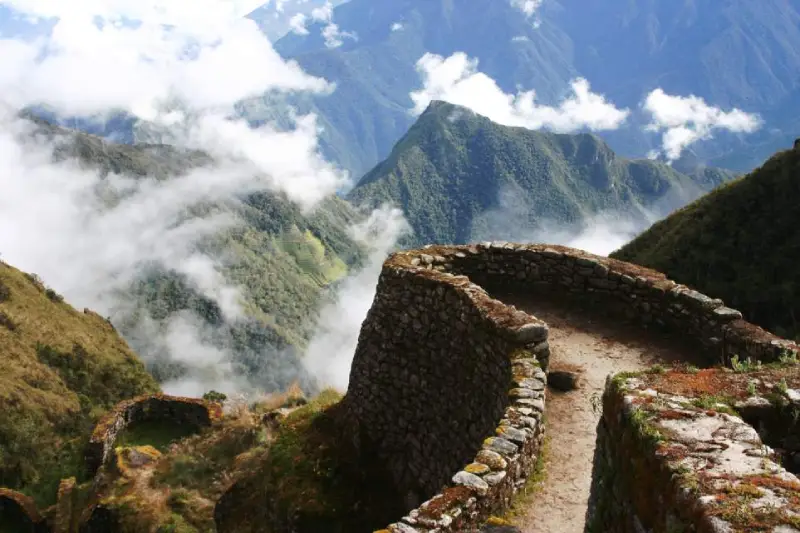
Gateway to Machu Picchu
For many trekkers, Wiñay Wayna represents the emotional climax of their journey. It’s a significant part of the Inca Trail hike. Mainly for the prospect of the proximity to Machu Picchu.
However it gained the recognition as part of the Inca trail’s scenic spots, but its own merits.
The Sun Gate: First Glimpses of a Lost Civilization
The Sun Gate, or Inti Punku, serves as the dramatic introduction to Machu Picchu for those hiking the Inca Trail. This iconic spot is not only one of the Inca trail’s scenic spots, but the entrance to a wonder of the world.
Journey to the Sun Gate
Hikers encounter the Sun Gate on the final day of their journey, typically arriving early in the morning. It stands approximately 40 kilometers (24.9 miles) from the trail’s start. You’ll follow a path through stunning landscapes and challenging terrains. This point marks a pivotal moment in the Inca Trail experience, where anticipation peaks.
Perched at an altitude of about 2,720 m / 8,924 ft. The Sun Gate towers above the surrounding cloud forest and the Urubamba River. It is both a gateway and a viewing platform. You’ll get views that stretch across the mountainous landscape to the ruins of Machu Picchu.
A Portal to History
From the Sun Gate, the ancient Inca site of Machu Picchu appears. The strategic placement of Inti Punku allows for the sun to shine through its gates during the summer solstice. This is one of the Inca trail’s scenic spots in all rightness. You’ll see some of the understanding of astronomy and architecture from the Incas .
This architectural marvel not only offers a first glimpse of Machu Picchu. It also serves as a ceremonial site in its own right. Inca people likely used it also to control access to the sacred city.
The experience of seeing Machu Picchu from the Sun Gate is unparalleled. The early morning light bathes the ancient city in a golden glow, enhancing the mystical and surreal atmosphere.
Sayacmarca: The Inaccessible Town in the Clouds
Sayacmarca, known as the ‘Inaccessible Town’, is a captivating feature of the Inca Trail’s scenic spots. Nestled high in the Andes, this site greets hikers with its mystery and architectural marvel.
Discovering Sayacmarca on the Inca Trail
On a standard Inca Trail trek, Sayacmarca appears on the second day. You’ll encounter it after conquering the ascent of Dead Woman’s Pass.
Located about 30 kilometers (18.6 miles) from the start of the hike. It emerges as a welcome sight on the steep hillside. The site offerts a perfect pause for weary trekkers.
At an altitude of 3,600 m / 11.811 ft, Sayacmarca sits above three valleys. All of these valleys make for Inca trail’s scenic spots. The site’s strategic location served defensive purposes. It also provided the Inca with a superb vantage point over their territory.
Architecture Amidst the Clouds
The architecture of Sayacmarca is really ingenious. The access is via a single narrow stone staircase, hinting at its name, ‘Inaccessible Town’. But you’ll want to visit. It is one of the most interesting Inca trail’s scenic spots.
The remains include residential areas, ritual platforms, and a network of water channels, all adapted to the mountain’s contours.
From Sayacmarca, the views are expansive. The cloud forest surrounds the site. On clear days, you can see the Urubamba River glittering in the distance. The air is crisp, filled with the spirit of the Inca people who once thrived in this remote outpost.
Sayacmarca’s isolation adds to its allure, making it one of the most intriguing parts of the Inca Trail hike. It offers not just history. High above, you’ll find beauty.
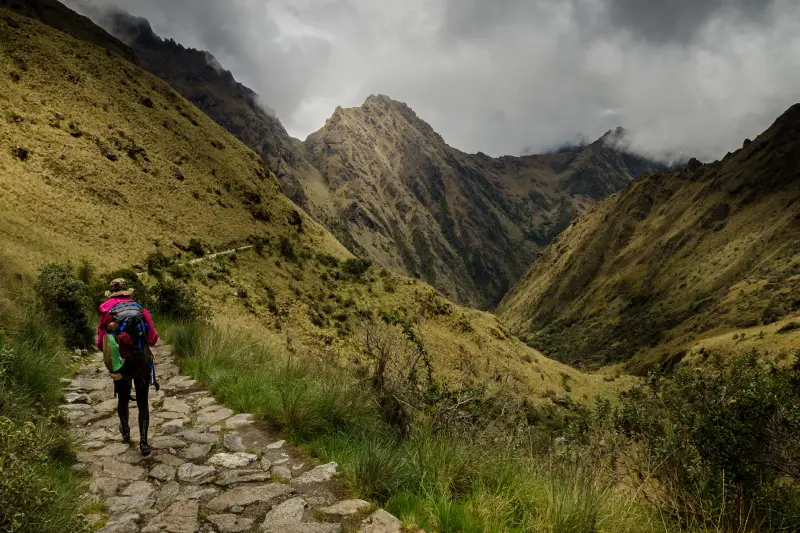
Overview
TOUR TYPE SALKANTAY TREK 5 DAYS: Hiking, camping, adventure, culture and history.
PROGRAM: Salkantay Trek to Machu Picchu
DURATION: 5 Days
WALKING DISTANCE: 60.5 km / 37.4 mi
DIFFICULTY: Difficult, it requires a good physical condition
STARTING ALTITUDE: 2900M/ 9515ft.
HIGHEST ALTITUDE: 4650m/15200ft.
WALKING DISTANCE: 60.5 km / 37.5 miles.
COLDEST NIGHT: Day 1 around 0º Celsius.
Walk on the Salkantay Trek to discover the beauty of the Vilcanota mountain range. Join Inca Path Peru on the Salkantay Trek to Machu Picchu. You’ll find unbelievable scenery, the thrill of hiking the Andes and more.
Salkantay trekking is highly recommended for adventurous travelers in search of cultural experiences. The Classic Salkantay Trek is one of the best alternatives for a hiking tour to Machu Picchu.
Also, don’t forget to check our reviews on Tripadvisor.
Salkantay Trail Includes
- Briefing at your hotel, the night prior
- All hotel transfers
- Bus transport from Cusco to Challacancha
- Professional tour guide
- 4 breakfasts, 4 lunches, 4 dinners
- Horse for carrying luggage (7 kg / 15.4 lbs maximum per person)
- Horses (for camp equipment, food, etc)
- 3 night stay in andean lodge camps
- Entrance to Machu Picchu
- 1 night accommodations in a Aguas Calientes hostel
- Return train ticket and bus / Return by car to Cusco
Things You Should Bring to the Salkantay Trail
- Backpack that distributes weight appropriately
- Thermal clothing layers for the night
- Good quality hiking boots
- Rain gear (water poncho, moisture wicking socks, waterproof backpack cover)
- Flashlight or headlamp
- Hat with brin (sun protection)
- Insect repellent
- Bathing suit and sandals
- Sunscreen (high SFP)
- First aid kit
- Bottle of water (reusable)
- Passport and important documents (student card if you have one, ID, etc)
- Extra cash in Peruvian soles
- Trekking poles
- Camera or smartphone with extra batteries (electric outlets won’t be available during most of the trek)
- High energy snack for the trail
Also, don’t forget to check our reviews on Tripadvisor.
OVERVIEW
PROGRAM: Huchuy Qosqo Trek to Machu Picchu
DURATION: 3 Days
WALKING DISTANCE: 35 km / 22 mi
DIFFICULTY: Moderate to difficult
For all trekking enthusiasts, the Huchuy Qosqo trek to Machu Picchu should be a goal. Venture on this 3 day adventure across the Andes. Discover the enigmatic Huchuy Qosqo (Peru), one of the Sacred Valley’s most unusual sites.
The Huchuy Qosqo Trek to Machu Picchu has some of the perks of the Inca Trail. Hike cross ancient paths, visit Inca sites, and enjoy magical landscapes. Plus, you don’t need to worry about the limitation on the capacity of the trail. Enjoy Huchuy Qosqo (Peru) with not many limitations.
Also, don’t forget to check our reviews on Tripadvisor.
Huchuy Qosqo Trek to Machu Picchu Includes
- Briefing at your hotel, the night prior
- All hotel transfers
- Transport from Cusco to Tambomachay (starting point)
- Professional bilingual guide
- 2 breakfasts, 2 lunches, 2 dinners
- Horse for carrying luggage (8 kg / 17.6 lbs maximum per person)
- Horses for camping equipment and provisions
- Camping equipment (tents and sleeping mats)
- Entrance tickets to Machu Picchu
- Transport from Ollantaytambo to Cusco
- Entrance tickets to Huchuy Qosqo
- 1 night’s stay in a hotel (3 star ) in Aguas Calientes
- Round train tickets Ollantaytambo to Aguas Calientes
- Transport from Lamay to Ollantaytambo
Things You Should Bring to the Huchuy Qosqo Peru
- Original Passport, ID, Student card if you have one
- Backpack for extensive trekking
- Warm clothing layers for the nights
- Rain gear (Moisture wicking clothes, rain poncho, etc.)
- Flashlight or headlamp
- Hat with brim for the sun protection
- Light clothing
- Insect repellent
- High quality hiking shoes
- Water purification tablets
- First aid kit and personal medication
- Reusable water bottle
- Extra cash in Peruvian nuevos soles
- Hiking poles
- Sleeping bag (If not in rental)
Overview
PROGRAM: Choquequirao Trek Peru
DURATION: 4 Days
WALKING DISTANCE: 60 km / 37 mi
DIFFICULTY: Between moderate and difficult
For an adventure with nature, history and discoveries, the Choquequirao Trek (Peru) is what you are looking for. This lost Inca city is one of the most impressive Inca citadels known. Comparable with Machu Picchu in more than one way.
Choquequirao (Peru) is a city of Inca Ruins. Its name means “Cradle of Gold”. The Choquequirao Trek (Peru) is the only way to arrive. You’ll have to walk for days to arrive in the impressive ruins of Choquequirao (Peru).
You’ll have an entire city to explore. Let Choquequirao (Peru) impress you. The architecture and artistry put in the construction is remarkable. As well as the sheer scale of Choquequirao (Peru).
The adventure to arrive there is comparable to the Inca Trail. Although the Choquequirao Trek is shorter and more a kind of nature exploration. The Choquequirao Trek Peru is an adventure that shines on its own.
Also, don’t forget to check our reviews on Tripadvisor.
Choquequirao Trek Includes
- A briefing at your hotel, the night prior to the departure
- All hotel transfers
- Private transport from/ to Cusco and Cachora
- Professional tour guide (bilingual)
- Horses to carry camping equipment and food
- Horse for personal luggage (Maximum 8 kg / 17.6 lb per person)
- Cook and kitchen staff, plus assistance en route
- Drinkable water refills once a day
- Snacks every day
- Camping equipment (tents, mattresses)
- Entrance to Choquequirao (Peru)
- Meals on the trek: 3 breakfast, 3 lunch , 3 dinners
- First aid kit
Things You Should Bring to the Choquequirao Trek
- A daypack with a change of clothing
- Rain gear (rain jacket, waterproof cover, rain poncho, etc)
- Trekking footwear (better if it is water resistant)
- Flashlight or headlamp and extra batteries
- Camera with extra batteries (power outlets won’t be available)
- Hat or cap for sun protection
- Hat for cold weather
- Sunscreen with high SPF
- Insect repellant
- Toilet paper for personal use
- Personal hygiene products
- Snacks high in energy (cookies, energy bars, chocolate, dried fruit, muesli, etc)
- Reusable water bottle with water for the first leg of the trek.
- Water purification tablets (just in case)
- Small towel
- Swimsuit (optional)
- Cash in Peruvian currency (Soles)
- Walking pole
OVERVIEW
TOUR TYPE: Hiking, adventure, history and culture.
PROGRAM: Short Inca Trail to Machu Picchu
DURATION: 2 Days
WALKING DISTANCE: 16 km / 9.94 mi
DIFFICULTY: Moderate to easy
GOOD FOR: Moderate physical fitness.
CONSIDERATIONS: Permit required (Book in advance)
For an unforgettable adventure that won’t take 4 days of your trip, join the Short Inca Trail tour. This 2 day Inca Trail Adventure will take you to the incredible city of Machu Picchu. The Short Inca Trail Tour is an adventure for most travelers. You don’t need to be an experienced hiker to walk the Inca paths.
The short Inca trail to Machu Picchu is a short hike to one of Peru’s most important destinations. The 2 day Inca Trail excursion is a way to arrive at the sanctuary of Machu Picchu. It is the Classic Inca Trail, without strenuous days of hiking.
The shortness does not sacrifice the appeal of the Inca Trail. You’ll get to see the spectacular views. You’ll visit the ancient archaeological sites, you’ll hike to Machu Picchu.
The Short Inca Trail tour will give you an unforgettable experience. You only need to prepare for this adventure. Acclimate to avoid altitude sickness. Inca Path Peru will take care of the rest.
Remember to book in advance. The Short Inca Trail to Machu Picchu has the same limitations of the Classic Inca Trail. Only a certain number of available spots are put out there.
Also, don’t forget to check our reviews on Tripadvisor.
Short Inca Trail Tour Includes
- Bus ride from Cusco to Ollantaytambo (Round trip).
- All transfers from and to your hotel in Cusco.
- Train to Km 104 (train Expeditions).
- Train back to Ollantaytambo
- Entrance ticket to the Inca Trail
- Entrance to Machu Picchu
- Professional bilingual tour guide.
- 1 night at a 3 star hotel (Aguas Calientes overnight).
- 1 lunch, 1 breakfast and 1 dinner.
- 1 CONSETTUR bus ride from Machu Picchu to Aguas Calientes (return of the second day).
- First aid kit.
- Oxygen tank in case of altitude sickness.
- Transport by bus from Ollantaytambo to Cusco.
Things You Should Bring to the Short Inca Trail Tour
- Medium-sized backpack (with a rain cover)
- Light clothing (one change)
- Trekking footwear
- Rain jacket or plastic poncho (rain gear)
- Appropriate warm layer
- Reusable water bottle
- Sunscreen with high SPF
- Insect repellent
- Hat or cap for the sun
- Sunglasses with UV protection
- High energy snacks for the hike (you can buy them in Cusco)
- Camera of smartphone with extra batteries
- Personal hygiene items
- Personal medication and first aid kit
- Important documents (original passport, student card, etc)
- Cash in local currency (Peruvian soles)
SALKANTAY TREKKING 4 DAYS OVERVIEW
TOUR TYPE SALKANTAY TREKKING 4 DAYS: hiking, camping, adventure, culture and history.
STARTING ALTITUD: 2900M/ 9515ft.
HIGHEST ALTITUD: 4650m/15200ft.
WALKING DISTANCE: 52km / 33 miles.
COLDEST NIGHT: Day 1 around 0º Celsius.
OVERALL DIFFICULTY: Difficult (depends on your level of fitness)
We have also Salkantay Trek 5 Days
Included in Salkantay Trek 4 Days
- Briefing at your hotel, the night before the tour
- Pick up from your hotel
- Transport from Cusco to Challacancha
- Professional guide
- 3 breakfasts, 3 lunches, 3 evening meals
- Horse for carrying a maximum of 8 kilograms of baggage per person
- Horses (equipment, food)
- Camping equipment (tents and sleeping mats)
- Entrance to Machu Picchu
- 01 night’s stay at a hotel in Aguas Calientes (3 star)
- Return train ticket in expeditions class Aguas Calientes –Ollantaytambo
- Transport Ollantaytambo – Cusco
WHAT TO BRING:
- Backpack
- Warm clothing for the nighttime
- walking boot
- Rain gear
- Flashlight
- Hat
- T-shirts
- Insect repellent
- Sun cream.
- Plastic rain poncho
- Water purification tablets
- First aid kit
- Bottle of water
- Passport
- Student card if you have one
- Extra cash in Peruvian currency and dollars
- Walking poles
- Cámara
- Batery
WE OFFER YOU TWO OPTIONS TO GO BACK TO CUSCO AFTER VISITING MACHU PICCHU.
TRAIN OPTION:
You can visit Machu Picchu for a longer time and have enough time if you are planning to do HUAYNAPICCHU or MACHU PICCHU MOUNTAIN, which require a minimum of 3 hours approximately. After visiting the area of Machu Picchu for 7 to 8 hours, you have to return to the town of Aguas Calientes to take a train at 18:20 to Ollantambo for 1.5 hours then by car to Cusco for 2 hours more to arrive in Cusco around 10:30 pm
CAR OPTION:
You arrive at Machu Picchu around 6:00 am for the guided tour for 2 hours then you have free time to explore the site on your own. If you take this option, and you are thinking to do HUAYNAPICCHU, or MACHU PICCHU MOUNTAIN is possible but will be too very tight and rush because you need to leave Machu Picchu at 11:30 to walk back to Hydroelectric for 3 hours in order to be in Hidrolectrica at 3:00pm to take a car for 6 hours back Cusco. If you are considering doing this option and doing one of the mountains, we recommend you stay one more night in Aguas Calientes and return the 6th day to Cusco by car.
TOP EXPERIENCES IN PERU
BEST TRAVEL PACKAGES AVAILABLE
Popular Destinations
CHOOSE YOUR NEXT DESTINATION




